How to Organize a Small Closet with Lots of Clothes
Learn how to organize a small closet with lots of clothes using our ultimate guide. Discover hacks, capsule wardrobe tips, and maximize your space today!
From Chaos to Calm: My Definitive Guide on Organizing a Small Closet with Lots of Clothes
If you’ve ever stood before a closet, packed so tightly that the hangers groan in protest, and thought, “I have absolutely nothing to wear,” then I want you to know you’re in the right place. It’s a frustrating paradox that I’ve encountered countless times in my work helping people conquer small spaces at Neat Tiny Home. A closet overflowing with clothes should, in theory, offer endless options. In reality, it often creates decision fatigue, stress, and a daily battle just to find a simple t-shirt. The problem isn’t just the small space; it’s the sheer volume of stuff packed into it. The good news? You don’t need a bigger closet. You need a better system. This comprehensive guide is my personal, battle-tested strategy on exactly how to organize a small closet with lots of clothes, transforming it from a chaotic cavern into a functional, beautiful, and inspiring wardrobe.
This journey is about more than just buying a few new bins and hangers. It’s a deep dive into reclaiming your space and redefining your relationship with your wardrobe. We’ll start with the most critical and often most difficult step: a ruthless but liberating wardrobe edit. From there, we’ll explore a treasure trove of small closet organization hacks designed to magically multiply your storage space. We will also delve into the transformative concept of the capsule wardrobe, a game-changing approach for anyone who feels overwhelmed by their clothing. By the time we’re done, you’ll have a clear, step-by-step blueprint. My mission is to show you how to organize a small closet with lots of clothes so that getting dressed every morning becomes a moment of joy, not a source of stress. Let’s open those closet doors and get started.
The Crucial First Step: A Ruthless Wardrobe Edit
Before you buy a single new hanger or storage bin, we must address the root of the problem: the clothes themselves. You simply cannot organize a space that is overstuffed with items you don’t need, love, or wear. A thorough decluttering session is the non-negotiable foundation of this entire process. I know this can feel overwhelming and emotionally taxing, but I promise you, the feeling of lightness and control on the other side is more than worth it. This initial purge creates the breathing room necessary to implement real, lasting organizational systems. It’s the most impactful part of learning how to organize a small closet with lots of clothes. It’s not about getting rid of everything; it’s about making intentional choices to keep only the items that truly serve you and your lifestyle, allowing you to finally see the amazing wardrobe you already own.
The Psychology of Letting Go: Why We Cling to Clothes
Understanding why we hold onto unworn clothes is key to letting them go. We attach memories, aspirations, and guilt to our garments. That dress from a decade ago holds memories of a fun night out. Those jeans that are two sizes too small represent a future, thinner version of ourselves. The expensive sweater with the tags still on is a symbol of wasted money. Acknowledging these emotional attachments is the first step. According to organizing expert Marie Kondo, it’s helpful to thank the item for the role it played—whether it was the joy it brought you once or the lesson it taught you about impulse shopping—before letting it go. This simple act of gratitude can help you release the item without guilt, making space for a wardrobe that reflects who you are today, not who you used to be or who you think you should be.
The 4-Box Method: A Step-by-Step Guide to Decluttering
To make this process systematic, I swear by the 4-box (or bag) method. Take every single item out of your closet. Yes, everything. Create a mountain of clothes on your bed. Then, set up four distinct boxes or zones, each with a clear purpose:
- KEEP: For items you love, wear regularly, and that make you feel fantastic. No hesitation allowed here. If it’s not a “heck yes,” it’s a “no.”
- DONATE/SELL: For items in good condition that no longer fit your body or your style but could find a happy new home with someone else.
- STORE: This is for off-season clothing and truly sentimental items you can’t part with but don’t need in your daily rotation. We’ll tackle storing these later.
- TRASH/RECYCLE: For items that are stained, torn, or too worn out to be donated. Look into textile recycling programs in your area for a sustainable option.
Asking the Right Questions: Beyond “Does It Spark Joy?”
While the “spark joy” concept is powerful, sometimes we need more practical questions to guide us, especially when dealing with a large volume of clothing. As you hold each item, ask yourself:
- Have I worn this in the last 12 months? If not, why?
- Does this fit me comfortably, right now? Not in a few pounds, but today.
- Do I feel confident and comfortable when I wear this?
- Does this item require expensive dry cleaning or complicated care that I always avoid?
- If I were shopping right now, would I buy this item again?
Strategic Space Maximization: Essential Small Closet Organization Hacks
Once you’ve edited your wardrobe down to the essentials, it’s time to get clever with the space you have. This is where the magic happens. By using a few simple tools and strategies, you can often double or even triple the usable storage in a standard closet. These small closet organization hacks are all about thinking creatively and making every single inch work for you—from the floor to the ceiling and even the back of the door. This phase is less about reducing your items and more about maximizing your storage infrastructure. It’s a critical step in the process, turning your empty, decluttered closet into a hyper-functional machine.
Doubling Your Hanging Space: The Magic of Double-Hang Rods
This is my number one hack for anyone with a standard closet that has just one high rod. Most closets have a huge amount of wasted vertical space. A double-hang rod is an adjustable, secondary rod that hangs from your existing one, instantly creating a second tier of hanging space. You can find them at any home goods store or on Amazon. I use the top rod for shirts, blouses, and jackets, and the bottom rod for folded pants or skirts. This simple, inexpensive device can literally double your hanging capacity in minutes. It’s the quickest, most impactful change you can make and a cornerstone of organizing a closet with a lot of clothes.
Choosing the Right Hangers: Why Slim Velvet Hangers are Non-Negotiable
I cannot overstate the importance of this: ditch your mismatched collection of plastic, wire, and bulky wooden hangers. Switch to a uniform set of slim, velvet-covered hangers. This is a non-negotiable rule in my book for three reasons. First, their slim profile takes up significantly less space on the rod, allowing you to fit more clothes. Second, the velvet texture prevents clothes—especially silky blouses or wide-neck tops—from slipping off and ending up on the floor. Third, having a uniform set of hangers creates a visually serene, boutique-like look that instantly makes your closet feel more organized and high-end. This small investment makes a massive difference and is one of the most vital small closet organization hacks.
Utilizing the Vertical Space: High Shelves and Floor Space
Don’t forget the highest and lowest points of your closet. The top shelf, often a dumping ground for random junk, is the perfect place for items you don’t need to access daily. Use matching bins or baskets to store off-season clothing, extra purses, or sentimental items. Label each bin clearly! On the floor, don’t just kick off your shoes. Add a low-profile shoe rack, or use shallow, rolling bins for shoes or folded items like sweaters. By strategically using these often-neglected areas, you take the pressure off your main hanging rod and create a more holistic storage system. This is a key part of the puzzle when figuring out how to organize a small closet with lots of clothes.
Thinking Outside the Closet: The Capsule Wardrobe Approach
If, even after a thorough declutter, you still feel like you have too many clothes for your small closet, it might be time to consider a new philosophy: the capsule wardrobe. This concept has been a lifesaver for me and many of my clients. A capsule wardrobe is a curated collection of a small number of essential, versatile pieces that you love to wear, which can be mixed and matched to create a wide variety of outfits. It’s not about restriction; it’s about intentionality. It simplifies your life, reduces decision fatigue, and is the ultimate strategy for making a small closet feel abundant. It forces you to define your personal style and focus on quality over quantity.
What is a Capsule Wardrobe and Why It’s Perfect for Small Closets
The core idea of a capsule wardrobe is to have a wardrobe of around 30-40 pieces (including tops, bottoms, outerwear, and shoes) for a particular season. These items are all chosen to be cohesive and work well together. Instead of having a closet full of “one-off” outfits, you have a collection of building blocks that can be combined in dozens of ways. For someone trying to figure out how to organize a small closet with lots of clothes, this approach is revolutionary. It allows you to keep only the best of the best in your closet at any given time, making it feel spacious and curated rather than overstuffed. To learn more about the philosophy, I highly recommend checking out blogs like Unfancy, a pioneer in the modern capsule movement.
The Art of the Seasonal Swap: Storing Off-Season Clothing
A key component of the capsule wardrobe system is the seasonal swap. You don’t need your heavy wool sweaters taking up precious space in July. Storing your off-season clothing elsewhere is one of the most effective ways to free up room. After your initial declutter, you should have a box of off-season items. The best way to store these is in vacuum-sealed bags placed in a shallow under-bed container or on a high shelf in another closet. This protects them from dust and pests while drastically reducing their volume. Performing this swap twice a year—once in the spring and once in the fall—keeps your main closet relevant, manageable, and breathing.
Folding vs. Hanging: The Great Debate for Small Closets
How you store your clothes—folded or hung—has a huge impact on space and clothing care. A common mistake is to try and hang everything, which quickly overwhelms the limited rod space in a small closet. A strategic approach, where you choose the best method for each type of garment, is essential. Understanding what to fold and what to hang will help you maximize every inch of your closet, from the rod to the shelves and drawers. This is a more nuanced aspect of learning how to organize a small closet with lots of clothes, but it’s one that pays huge dividends in both space saved and the longevity of your garments.
| Clothing Item | Best Method | Reason |
|---|---|---|
| Blouses, Dresses, Blazers | Hang | Prevents wrinkling; maintains shape. Made from delicate or structured fabrics. |
| T-shirts, Casual Tops | Fold | Stretchy knits can get shoulder bumps from hangers. Folding saves hanging space. |
| Sweaters (especially heavy ones) | Fold | Hanging will stretch them out of shape over time due to their weight. |
| Jeans and Sturdy Trousers | Fold or Hang | Durable enough for either. Folding saves space; hanging on tiered hangers can work well. |
The Art of File Folding: How to Maximize Shelf Space
For the items you fold, don’t just stack them in piles. Master the art of “file folding,” famously popularized by Marie Kondo. This involves folding items into neat, compact rectangles that can stand up on their own. You then “file” them in your drawers or on shelves in rows, from front to back, rather than stacking them. The benefit is twofold: you can see every single item at a glance (no more forgetting about the shirt at the bottom of the pile!), and you can remove one item without toppling the entire stack. This method is truly revolutionary for drawers and shelves and a critical skill for maximizing your storage capacity.
Maintaining Your Organized Closet: Habits for Long-Term Success
You’ve done it. You’ve decluttered, strategized, and organized. Your closet looks amazing. Now, how do you keep it that way? The final, and arguably most important, part of learning how to organize a small closet with lots of clothes is developing the habits that will maintain your new system. An organized closet is not a one-and-done project; it’s a lifestyle. But don’t worry, these habits are simple and take just a few minutes a week. They are the small investments that protect your initial hard work and prevent you from ever sliding back into closet chaos again. They ensure your closet remains a source of calm and joy for years to come.
The “One In, One Out” Rule: Your Golden Ticket
This is the golden rule of maintenance. For every new piece of clothing you bring into your home, one must leave. This simple policy forces you to be a conscious consumer and prevents the slow, mindless accumulation of clothes that caused the problem in the first place. When you’re considering a new purchase, you have to mentally decide which current item it will replace. This instantly raises the bar for what you allow into your wardrobe. Does this new item serve you better than something you already own? This single habit is the most powerful tool you have for keeping your closet perfectly balanced.
By following this complete roadmap—from the deep psychological work of decluttering to the practical application of smart storage hacks and the daily habits of maintenance—you can absolutely conquer your closet. Knowing how to organize a small closet with lots of clothes is a skill that empowers you to take control of your space and, ultimately, bring a little more peace and order to your daily life.
What’s your biggest closet challenge? Are you ready to tackle the great wardrobe edit? Share your goals and questions in the comments below!
Frequently Asked Questions (FAQ)
How do I store bulky sweaters without taking up too much space?
Never hang heavy sweaters! They will stretch out. The best method is to fold them neatly. To save space, you can “file fold” them in a drawer or use shelf dividers to keep your stacks neat on a shelf. For very bulky off-season sweaters, vacuum-seal bags are a fantastic option to compress them for storage.
I have a lot of shoes. What’s the best solution for a small closet?
For shoes, you have to think vertically and hidden. An over-the-door pocket organizer is a classic for a reason—it can hold 12-15 pairs of flats or sneakers without taking up any floor space. For the closet floor, use a multi-level shoe rack. Clear, stackable shoe boxes are also great because they protect your shoes from dust and allow you to see what’s inside.
My partner and I share a tiny closet. Any tips?
Sharing a small closet requires clear boundaries. First, visually divide the space in half. Each person is responsible for their zone. Use all the hacks mentioned—double-hang rods, slim hangers, and over-the-door storage—on both sides. It’s also a great opportunity for both partners to embrace the capsule wardrobe concept to reduce the total volume of clothing.
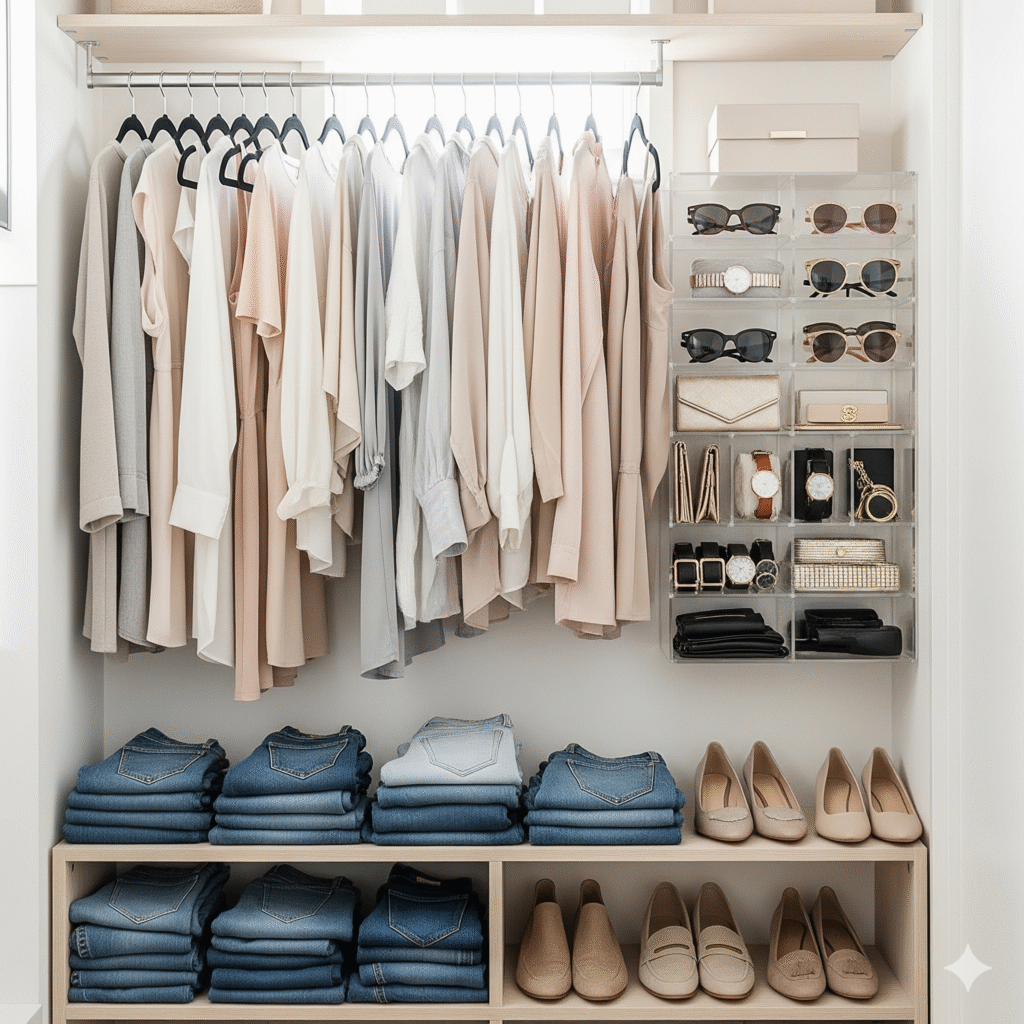
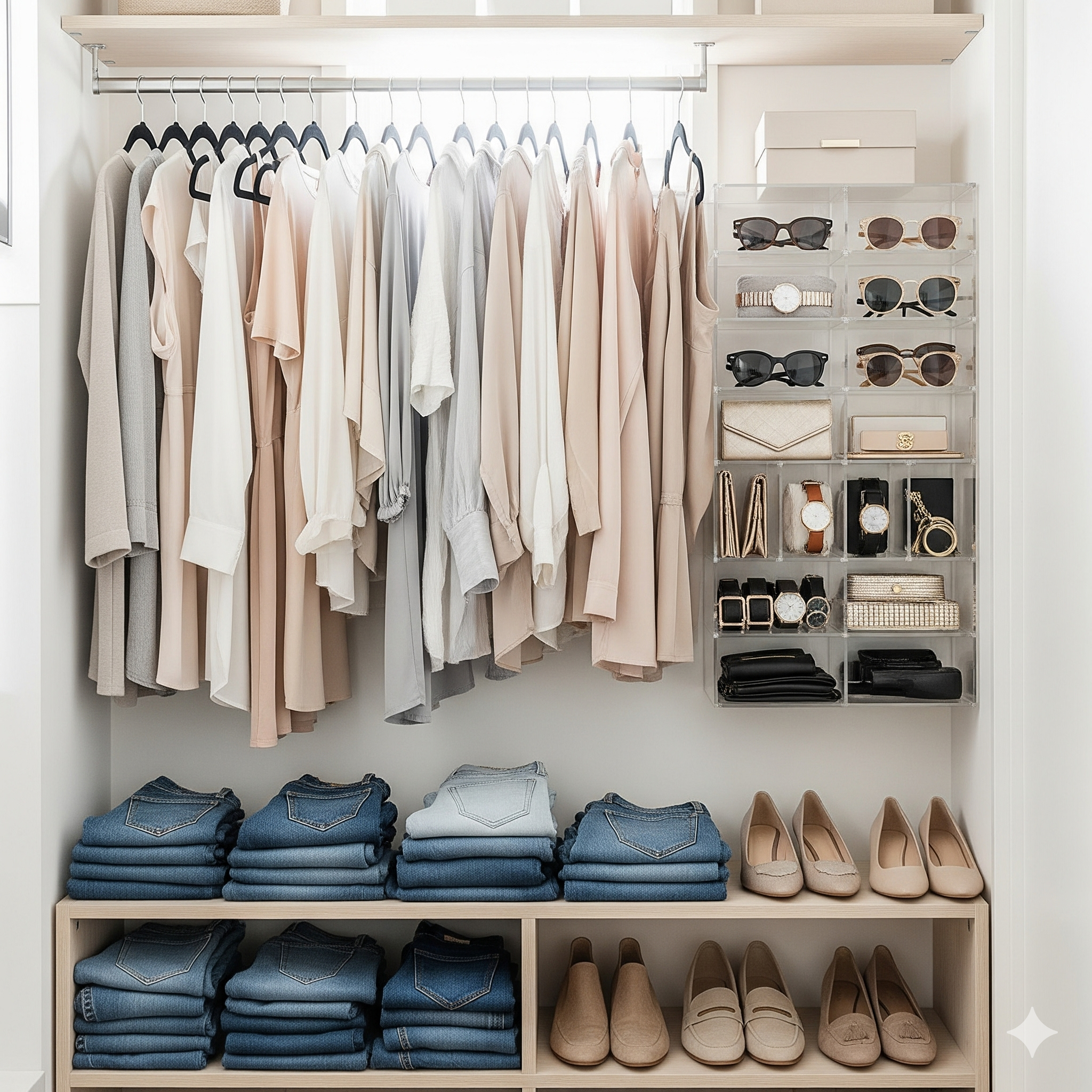
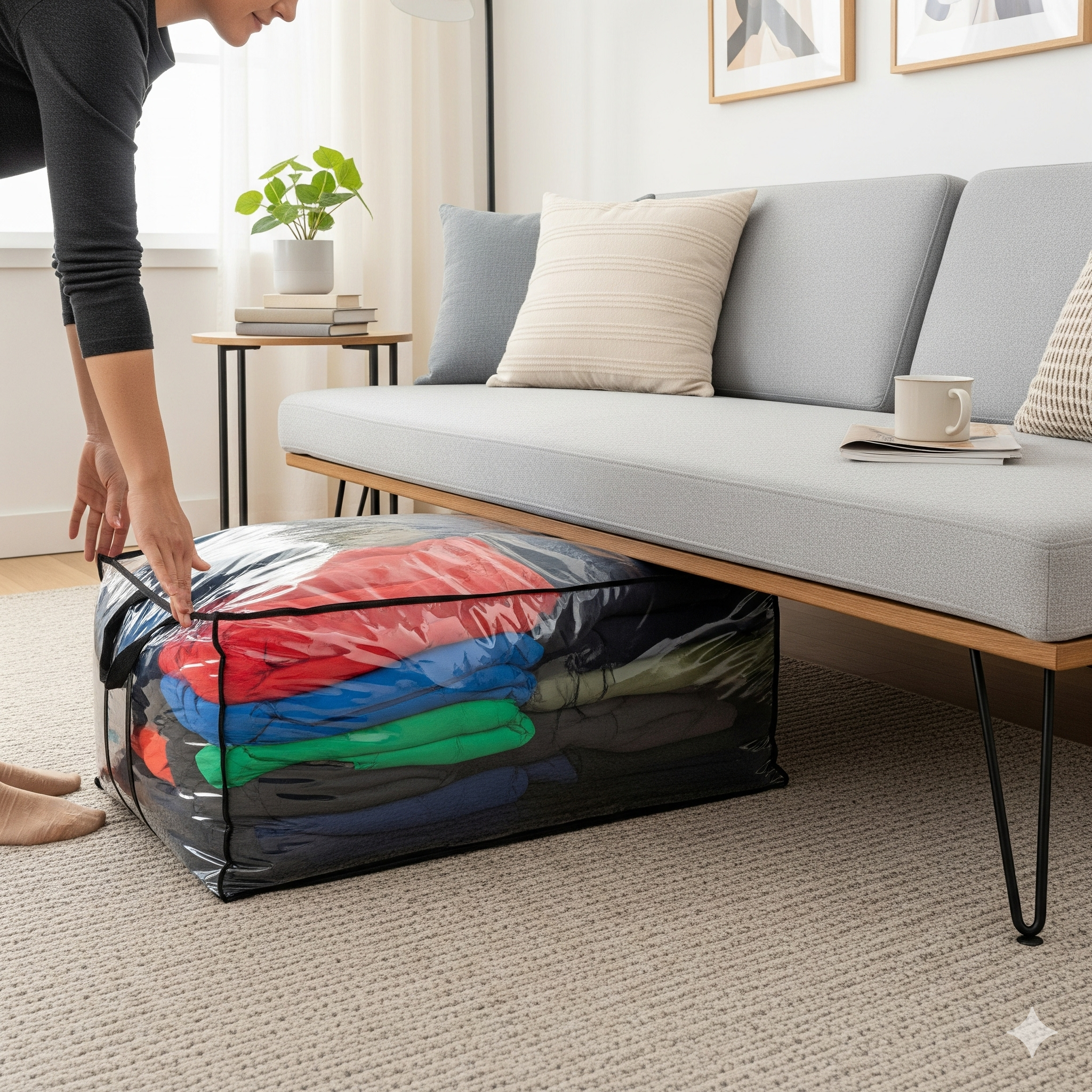
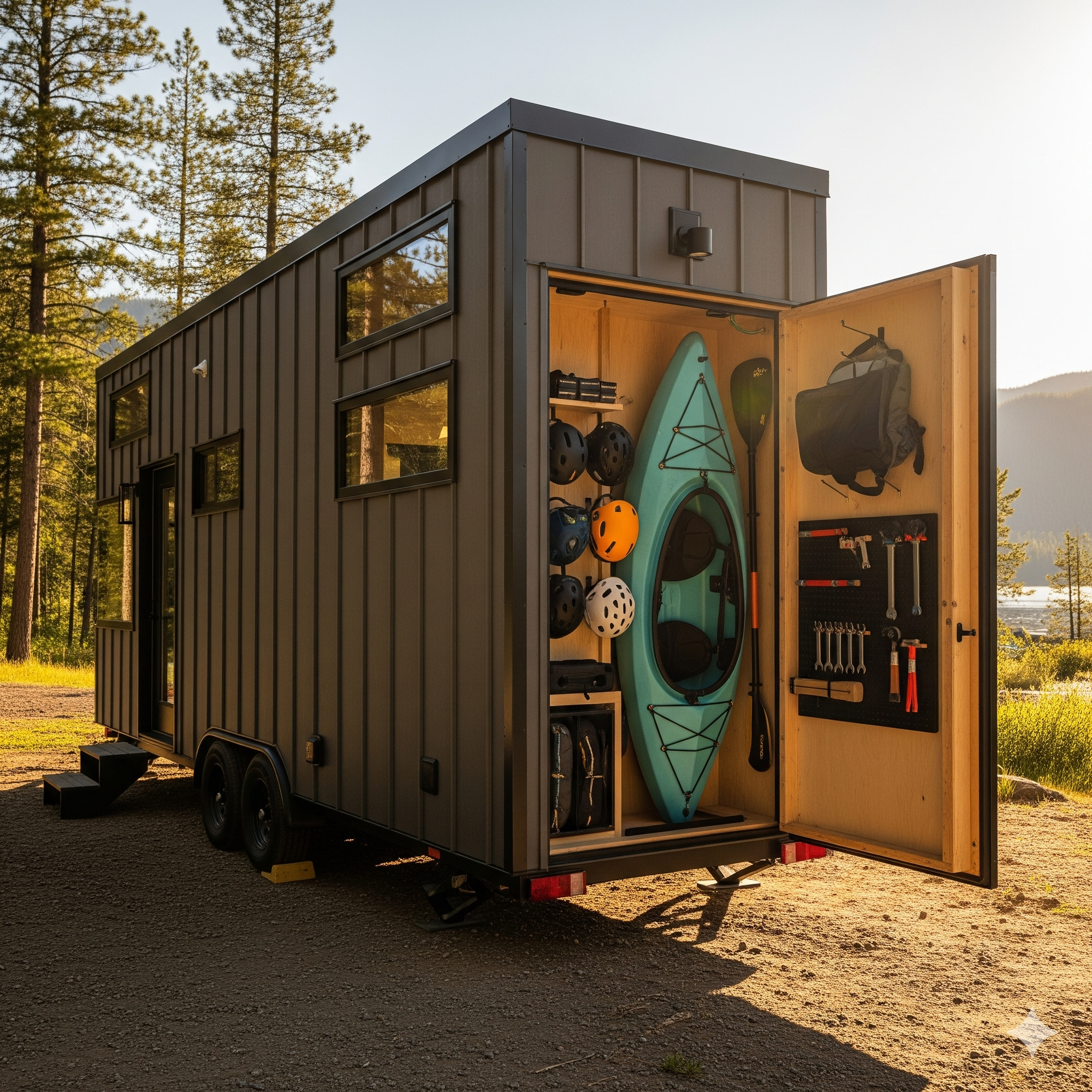
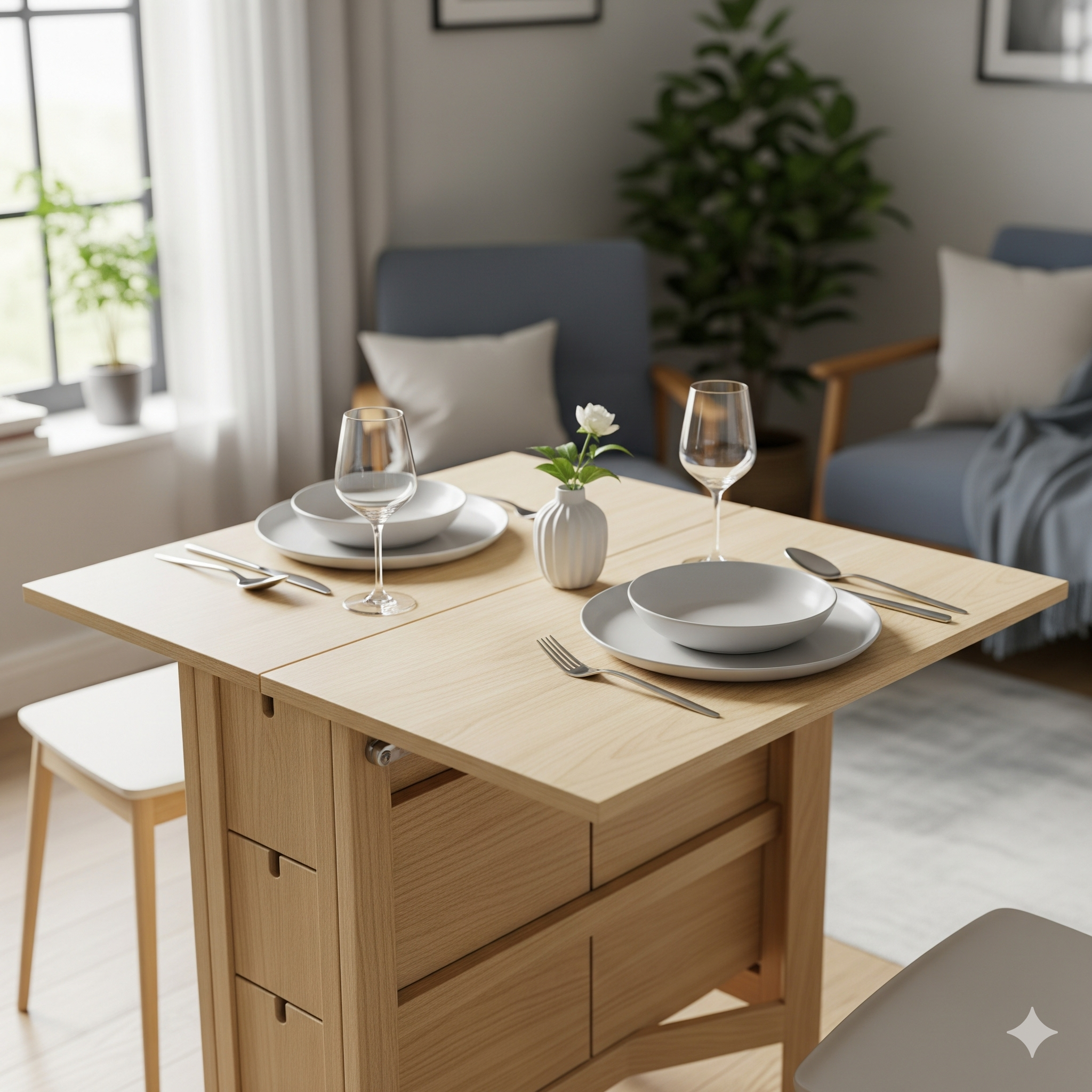
Post Comment